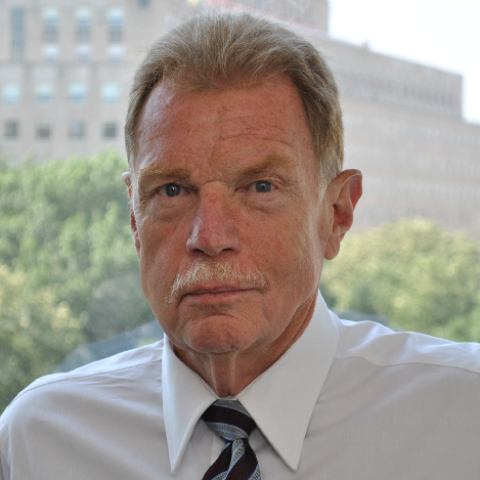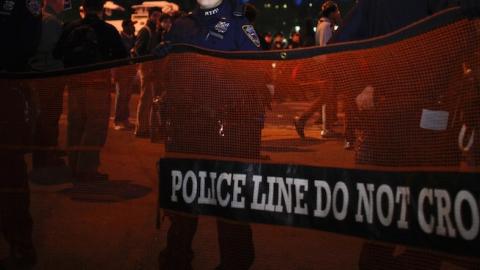Following the crisis in America’s cities involving the police and minorities, calls for justice reform have become even more frequent than have interventions from the Department of Justice.
Tragically, a surge in violent victimizations has swept across several American cities in the past two weeks. This may well be a reflection of what happens in the public square when the forces of order are weakened or demoralized.
Reform may well be necessary. Though not all the cases that inflamed the crowds were, in fact, instances of injustice, the application of needless force has often produced a sense of oppression for inner-city citizens, and justice is the loser.
Data from every major report show profound declines in crime in the U.S. over the past two decades, accompanied with sharp increases in incarceration. In this sense, our court system has worked. But the Obama Administration’s Department of Justice has shown troubling signs it hopes to use racial politics to prevail over the courts and public safety.
Alexis de Tocqueville once wrote, "A revolt of the judiciary is more dangerous to a government than any other, even a military revolt. Now and then it uses the military to suppress disorder, but it defends itself every day by means of the courts.” The fear is that some in the judiciary, guided by radical theory, will “revolt” against the police on the street.
The criminal courts are driven by the daily actions of the cop on the beat, the point of intersection between the violence of victimization, and the quest for justice. While the cause and effect between incarceration and crime rates remains unsettled, we know that there is no incarceration without policing.
There is no more important daily function for our justice institutions than when police maintain order, summarized in the idea of “broken windows” policing. Famously, policy experts George L. Kelling and James Q. Wilson noted “one unrepaired broken window is a signal that no one cares, and so breaking more windows costs nothing.” Some today regard broken windows policing as the cause of unrest.
The Washington Post recently called for “a softer approach,” contrasting it with the pattern of “aggressively arresting people for minor crimes, a strategy known as ‘zero tolerance.’”
However, New York Police Commissioner William Bratton, in a report to New York City, defines the matter more carefully, emphasizing “problem solving” policing, which is not zero tolerance, but rather actions driven by “police discretion.”
There are two ways that Bratton’s approach works: halting the withdrawal of the mechanisms that sustain community norms, and breaking the vectors transmitting the criminal conduct. As Kelling and Wilson wrote, “The essence of the police role in maintaining order is to reinforce the informal control mechanisms of the community itself.” When the community withdraws in fear, disorder enters that space.
As Bratton notes, “Serious crime was more likely to occur in a lawless environment—and ubiquitous low-level disorder signaled lawlessness even more than serious crime, which was less common.”
As for “breaking the vector,” Bratton introduced ideas from what would today be seen as basic epidemiology. “Arresting someone for a misdemeanor frequently prevents him from graduating to committing felonies, for which severe sanctions like prison may result.”
Misdemeanor arrestees don’t go to prison, and they rarely go to jail. Yet an encounter for misdemeanor drug or alcohol intoxication may take a weapon, and a shooter, off the streets.
Did it work in New York City? There were 1,946 men, women, and children murdered in 1993. In 2014, there were 328. In some measure, regardless of your theory, cops were the instrument of that achievement.
When accused of racial targeting, Bratton stresses addressing behavior. As he put it, “Our policing is based on conduct, not demographics.” Where the statistics show concentrated racial impact, Bratton argues that Blacks and Hispanics “represent half of our city’s population, but 96.9 percent of those who are shot, and 97.6 percent of those who commit the shootings.”
That is, the strictest equality in crime is that between victimizers and victims. The dilemma for police is that nearly all shooters/victims are Blacks/Hispanic, yet nearly all Blacks/Hispanics are not shooters/victims. Hence, the need for discretion, based on conduct.
Moreover, broken windows may yield a “peace dividend.” Bratton again: “As crime and disorder decrease, arrests and summons issuance should follow, and so they have…. in 2014, there were 60,000 fewer felony arrests than there were twenty years ago. The city jail population on Rikers Island was nearly halved between 1993 and 2013. That’s why, from 1990 to 2012, New York City has sent 69% fewer people to state prisons.”
Social theorists have not settled the “why” for the sharp increase in crime we experienced, or the steep decrease that followed. Factors include demographics, economic performance, incarceration, fatherlessness, even abortion. Surely the Post would not call for the police to “stand down.” New laws related to domestic violence, for example, have increased arrests for crimes against persons in the home. Should we want these efforts to be turned off?
Let us not forget who cops are, many with low pay and miserable working conditions, and the wife and kids who wonder every night whether you’re coming home or will be shot in the face sitting in your patrol car. Citizens, and those who protect them, have a duty to each other.
Regardless of theory, if we succumb to the wrong diagnosis, and insist on unmasking policing as no more than racial oppression, we can break the thin blue line of men and women, of all races, who serve and protect. Injustice will surely flow from that outcome, unstaunched.
















